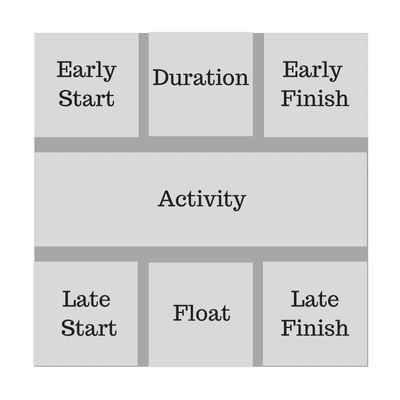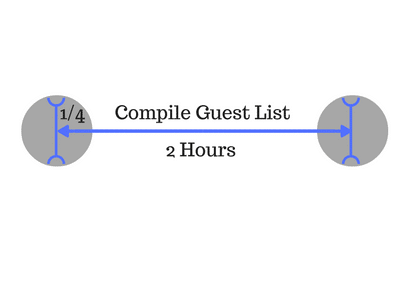What is Critical Path in Project Management? The Road to Project Success

Projects are rarely simple.
From start to finish they comprise of a dozen activities which can be broken into sub-tasks and milestones.
And if the scope of the project calls for collaboration between teams of different departments, then coordinating resources, timelines and outputs is even more challenging.
Keeping this in mind, project management offers managers and supervisors multiple tools that respect the sensitive nature of unforeseen circumstances and dependent tasks.
Gantt Charts are one such example.
The concept of the Critical Path is another.
Which one is better?
Both have their inherent advantages and drawbacks.
And they are equally popular.
In this piece we will explore the definition of the Critical Path, understand its significance in project management, run through the terminology of Critical Path Analysis (CPA) and review the relationship between the Critical Path and Gantt Charts.
What is a Dependent Task?
Before understanding what a Critical Path is, it is important to re-visit the definition of a dependent task.
A dependent task or activity is one that can’t be started unless the task preceding it has been completed and its output is available. A dependent task is also known as a sequential task – one that is part of a sequence of activities and has a definite task before it and a definite task after it. This flow can’t be disturbed even under extenuating circumstances.
Baking a cake is a project that is largely comprised of sequential tasks. The dry ingredients have to be sifted first so that they can be mixed with the wet. The batter has to be made first before it can be baked. And do on! Each task is dependent on the activity preceding it.
Exercising at the gymnasium on the other hand is non-sequential. You might choose to skip the warm-up, try the cardio first and then lift the weights – or mix things up – without unduly affecting the end result.
What is the Critical Path?
The Critical Path is the longest unbroken chain of sequential activities or dependent tasks such that delays along the path affect the completion date of the project leading to certain deadline violations. A task in the Critical Path can’t be started unless the task just before it has been wrapped to satisfaction.
The way a Critical Path works, a delay of two days in any activity delays the completion of the project by 48 hours, unless the duration of a task preceding or succeeding it has been cut short by the same amount of time.
Let us assume that a project can be broken down into activities A, B, C and D.
The Critical Path runs along A, B and D and task C is parallel to sub-activity D.
In this scenario if task B stretches beyond its estimated duration by X hours, then by default activity D should be completed X hours ahead of time. Unless this happens, the project will veer from its proposed timeline.
Another interesting thing to note is the fact that revisions to the estimated duration of C will not impact the Critical Path and most likely the project outcome in any significant way.
Why is a Critical Path in Project Management So Useful?
Even if you are not a project manager or are just starting out, the benefits of understanding what the Critical Path is and the advantages it offers are quite transparent and evident.
Ability to Accelerate Projects
The first benefit is the ability to definitively accelerate a project. In complicated projects there might be several layers of activities.
And the individuals in charge of these layers may hail from different departments. With so many factors to juggle, project managers can rest easy knowing there is buffer time to maneuver if the need arises.
The Critical Path is a life saver in this instance.
It highlights the sequence of activities that must be optimized to accelerate the project execution.
Managers do not need to waste resources on tasks that can’t impact the deadline. They can focus without hesitation on the activities that comprise the Critical Path.
Better Resource Management
Resource Management is tricky. Who is the right fit for a particular activity? Where should productive team members be employed? Who needs to pick up slack and in which phase of the project to ensure an expedited delivery?
These are difficult questions to answer.
But with the Critical Path picked out, resource allocation is no longer as big a challenge.
Project managers can entrust the Critical Path activities to the most seasoned, responsible and skilled workers knowing that they have taken the right decision.
In case of delays along the Critical Path, resources can be diverted from tasks that are not as important to keep the project rolling along smoothly.
Dependency Identification
The Critical Path clearly shows the most sensitive dependencies in a project. Since the activities are sequential, a task can’t be completed unless the one before it is done.
Why are dependencies important?
Because of the Critical Path (and dependencies), supervisors can grasp risk management better. They can initiate pre-emptive action if they spot any disruptions or delays that have the potential to upset the timing of the sequence along the Critical Path.
They know unequivocally that if control measures aren’t taken, the deliverables will not be ready on time. This gives them the confidence to do what it takes – even if it means compromising other aspects of the undertaking – to adhere to the timeline.
Float (Slack) Identification
Float is the time by which the estimated duration of a critical activity can be stretched without impacting the completion of the project.
This is a safety net for project managers and teams, especially when they attempt to execute a complex web of interdependencies. We will discuss more about Float in a subsequent section.
Critical Path Vs. Gantt Charts
Gantt Charts are very much like the Critical Path.
They visually represent the duration of activities that make up the project and also point out the activities that are dependent and those that are non-sequential or independent in nature.
Both the Gantt Chart and Critical Path require deep analysis and an understanding of what the project entails. Managers must figure out the activities involved, assign them to team members who are responsible for execution and in general develop a bird’s eye view of how the project might unfold.
The Gantt Chart is essentially a snapshot of a project. It covers both dependent as well as non-dependent milestones.
The Critical Path is more specific. It focuses on only the dependent or sequential tasks that can upset the project timeline and lead to delays in completion.
In fact a Gantt Chart can be used to pick out the Critical Path. The two aren’t either or practices.
They complement each other and should indeed be used together.
The Critical Path Dictionary
Like any tool, The Critical Path also has a number of terms unique to it. Here are the most important ones.

- Early Start: For a particular activity, Early Start is the earliest start time that is possible for it.
- Duration: This is the estimated period of time over which the activity can be competently and satisfactorily executed. Duration is often determined rather optimistically by managers keeping best case scenarios in mind. This is the reason why the PERT technique and formula has been developed.
- Early Finish: Early Start plus the Duration determines the Early Finish. Thus it is the earliest time by which an activity can be completed given the constraints of a project.
- Late Start: For a particular activity, Late Start refers to the latest time by which the task has to be initiated to respect the timeline of the project.
- Float: Float or Slack is the time period by which the Duration of the activity can be delayed without negatively impacting the final project result.
- Late Finish: Late Finish is the latest time by which a task along the Critical Path can be completed without violating the deadline.
Steps In Undertaking a Critical Path Analysis
A full scale Critical Path analysis results in the creation of the Critical Path Diagram which uses the terms discussed in the previous section.
Step 1: Break a Project into Activities
Let’s use the example of planning a party to go through this process so that it is clear and understandable, even to those who haven’t studied project management textbooks.
In daily life you come across many projects. Chances are you do not label them as such because they are a part of your to-do list. “Throw a Party” maybe found on this list. But since it involves the execution of more than one step to reach completion, it is better defined as a Project.
Take time to think through all the activities or sub-tasks that you will have to tackle to host the party. Some might be:
- Decide on the date for the party
- Compile guest list
- Pick a menu
- Pick the beverages
- Order the food through a caterer
- Order the beverages
- Order the linen
- Send out guest invites
Step 2: Determine How the Tasks are Related to Each Other
For this step you need to create a table with the headers, Activity Name, Duration, Nature, and Dependent On.
The first two headers are self-explanatory. Nature points to whether the activity is sequential or parallel. Dependent On should identify the task an activity is supported by.
Here is how you can fill in the table with the activities defined in the previous stage.
| Activity Name | Duration | Nature | Dependent On | |
| Decide on the date for the party | 15 minutes | Starting Activity | N/A | |
| Compile guest list | 2 hours | Sequential | Decide on the date for the party | |
| Pick a menu | 1 hour | Sequential | Compile guest list | |
| Pick the beverages | 1 hour | Sequential | Pick a menu | |
| Order the food through a caterer | 30 minutes | Sequential / Parallel | Dependent on “Pick a menu”. Parallel to “Pick the beverages”. | |
| Order the beverages | 30 minutes | Sequential / Parallel | Dependent on “Pick the beverages”. Parallel to “Order the food through a caterer”. | |
| Order the linen | 2 hours | Sequential / Parallel | Dependent on “Compile guest list”. Parallel to any task after “Compile guest list”. | |
| Send out Guest Invites | 3 hours | Sequential / Parallel | Dependent on “Compile guest list”. Parallel to any task after “Compile guest list”. |
A couple of points to take note of here are:
- Just because activities may appear to be in a logical flow, one after the other, it doesn’t mean that a task is dependent on the task that comes to your mind right before it. For example, “Order the food through a caterer” generally comes after finalizing the wine and beverages. But placing the order is not dependent on choosing the liquor. It is in fact dependent on choosing the menu. You can debate over the type of wine you wish to serve after ordering the food.
- A task or an activity can be sequential as well as parallel. “Order the linen” is sequential because it depends on “Compile the guest list”. However it can run parallel to any activity once the list is ready. There will be two constraints determining when you execute the task and they are the time you have in your schedule and the duration of the activities involved in planning the party which will more or less decide the priority of the to-dos.
Step 3: Create Node and Arrow Diagrams for Each Activity & Relate Them to Each Other

A “Node” is a circle that denotes the start or the finish of an activity. The arrow stands for the duration of the task. A node is further partitioned into semi-circles. The one to the left holds the number of the activity in the sequence of the Critical Path. The one to the right notes the “Start Time” of the milestone.
The unit above is the visual depiction of the “Compile guest list” task. Other activities must also be pictorially represented in a similar fashion.
The tasks that are sequential and dependent on a milestone that precedes it start off from the node at which the previous activity ends.
Assembling all dependencies and non-dependencies in this way gives a final picture from which the critical path can be easily highlighted.
A Critical Path is the clear road to success for projects. If the activities along the path stay on time and in budget, it is likely that the endeavor will reach a successful conclusion.
[text-blocks id=monster-newsletter]
Last updated on May 28, 2025




